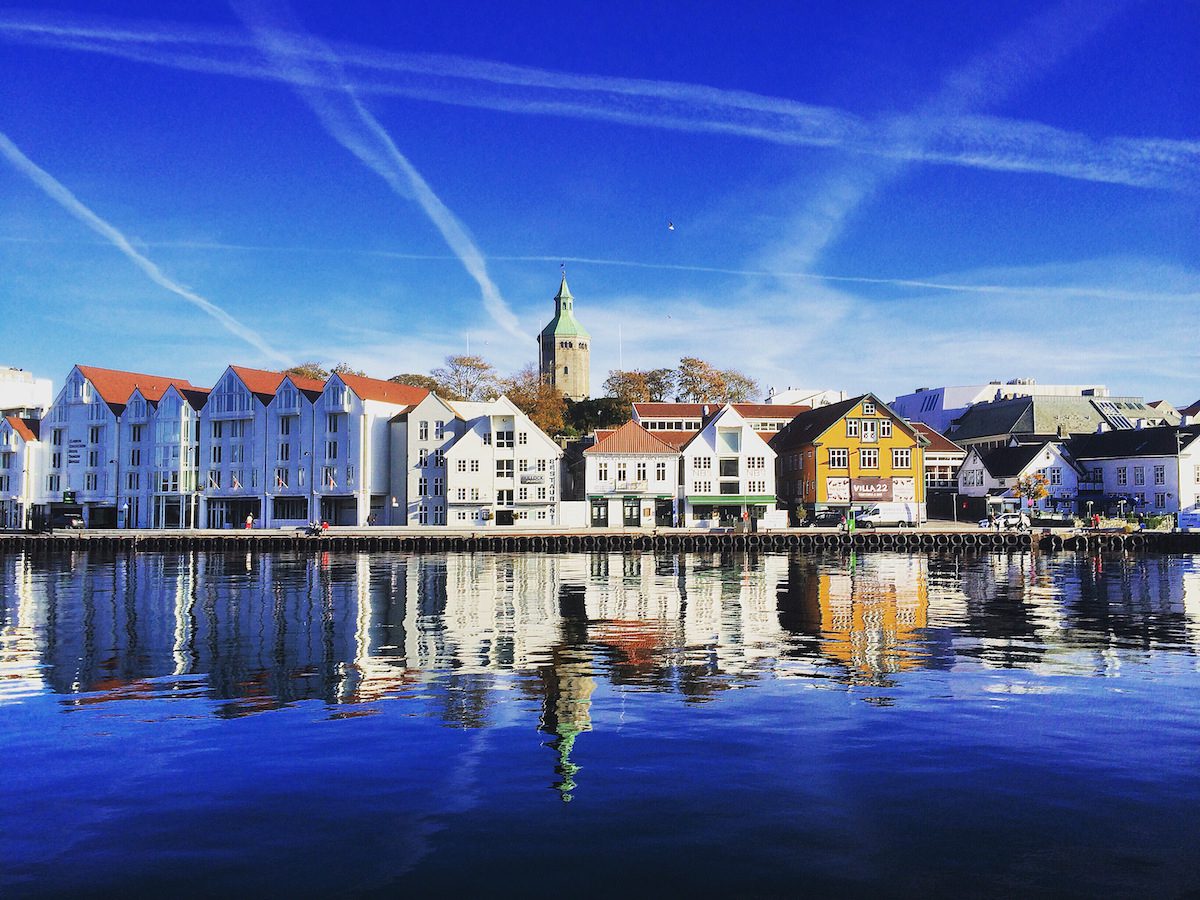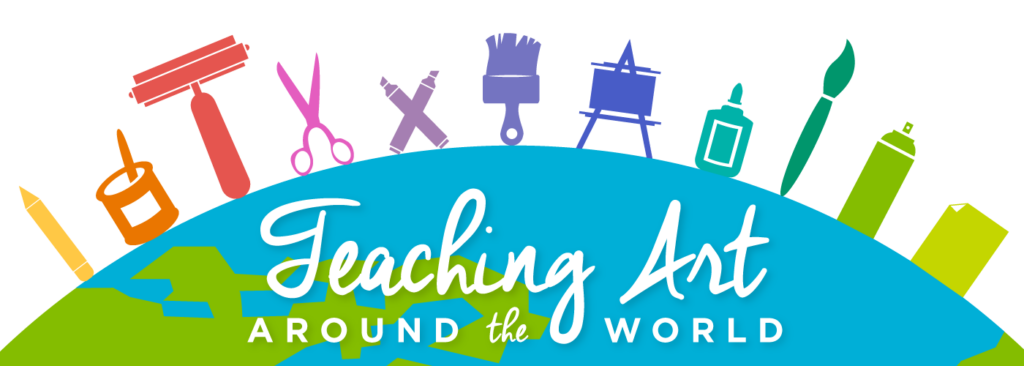
Today we’re thrilled to bring you a brand new series called “Teaching Art Around the World.” Each Monday for the next month or so, we’ll be chatting with teachers from all over the globe about what it’s like to live and teach abroad.
This week, we take a trip to Norway to interview Libby Beaty, a teacher at the International School of Stavanger. Libby lives in Stavanger with her husband and three children.
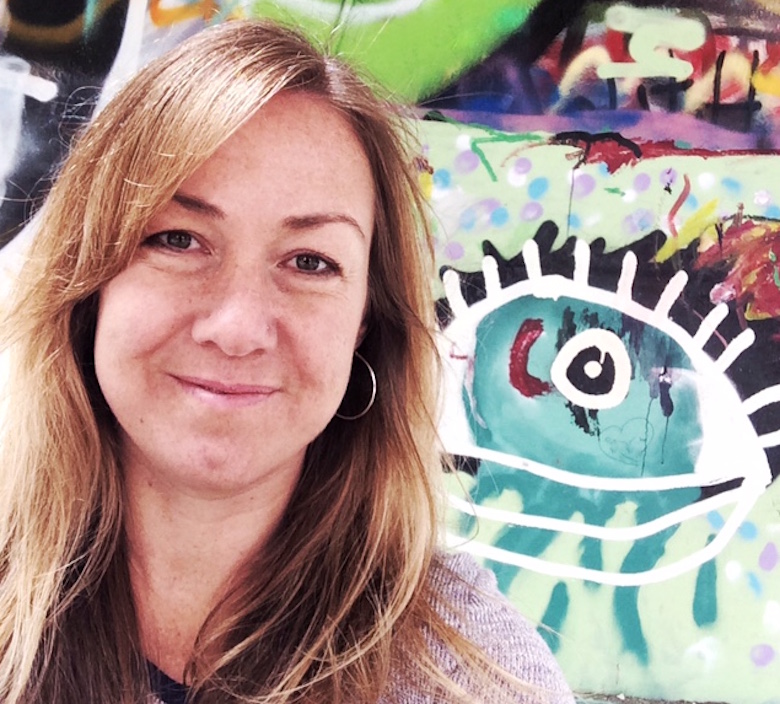
Read on to see why Stavanger is one of the most colorful and artistic cities you’ll find, why it’s so easy to be inspired by the natural beauty of Norway, and why her school offers classes in karaoke and ping pong.
Libby’s Background
Where I’m “from” is always a difficult question for me to answer. I was made in the Democratic Republic of Congo, born in Kentucky, and have called Kenya, Qatar, India, and now Norway, “home.” My husband and I have been living and working internationally for 15 years.
There are two fantastic organizations, Search Associates and International School Services, that hold recruitment fairs for teachers looking for international teaching opportunities. After working at a boarding school in Kenya for 4 years (where I was previously a student), my husband and I went to one of these recruitment fairs in Boston with Search Associates, got jobs in Qatar, and have never looked back.
On Teaching in Norway
Libby’s School
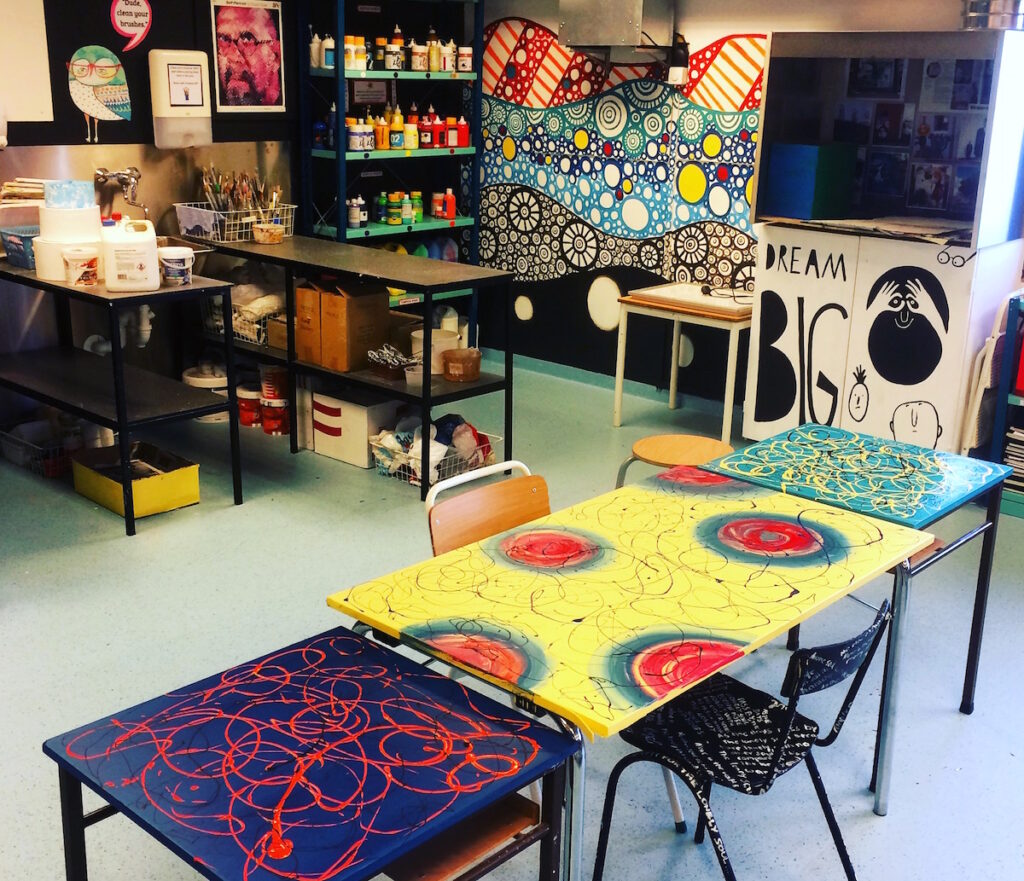
The school where I work is the International School of Stavanger (ISS). We have about 620 students currently attending our school, from pre-school all the way up to 12th grade. ISS provides an internationally accredited education and a university preparatory curriculum, primarily for students of the expatriate community in Stavanger. The school just celebrated its 50th anniversary this past year, and it is now one of the largest international schools in Scandinavia.
Libby’s Position (aka, Middle Schoolers are the Same Just About Anywhere)
Do I like middle schoolers or high schoolers better? It depends on the day.
No, just kidding. They are quite different, of course. I love the silly and sometimes surprising responses that come with teaching middle school students. The energy they bring to the classroom is pretty fun and they are usually willing to try anything.
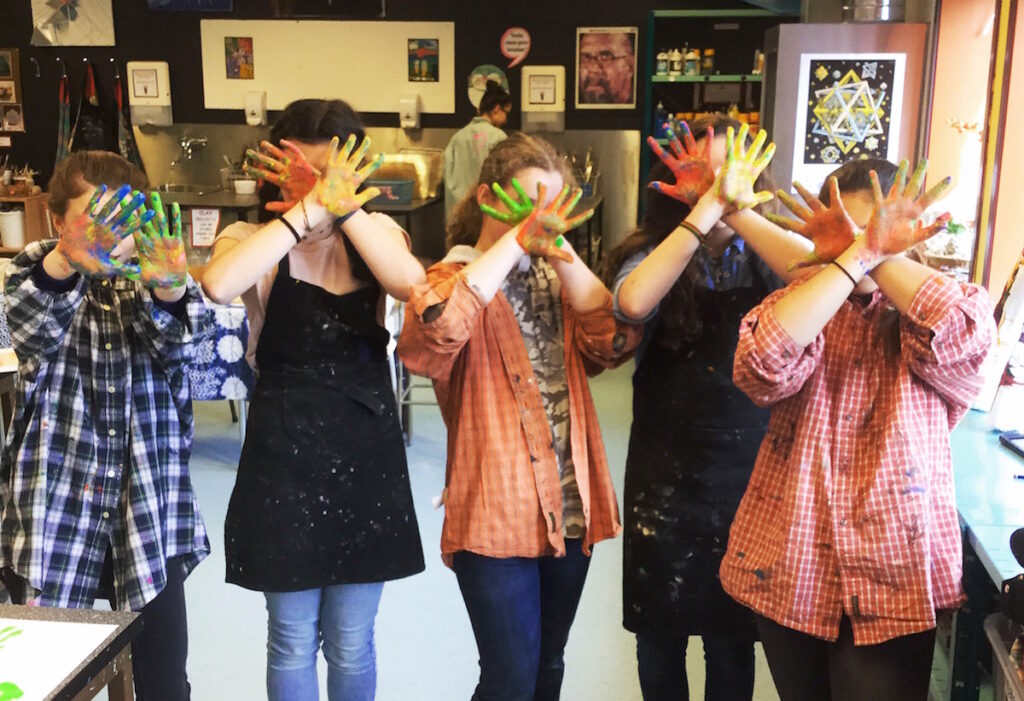
Teaching high school art is where I have spent the most time and feels the most “normal” for me. I also teach an IGCSE (International General Certificate of Secondary Education) Art class, which meets for one 40-minute block and two 80-minute blocks per week. I love that I can have serious conversations with my high school students and get to know them, their interests, and life experiences and then help them bring these to what and how they create.
On Exploratory Classes
Every middle school teacher must teach an exploratory class, and it is really great as it gives teachers the chance to share their different interests and passions with students. It also gives students the chance to pick from a variety of unique offerings. For example, I just finished teaching a class on mural painting.
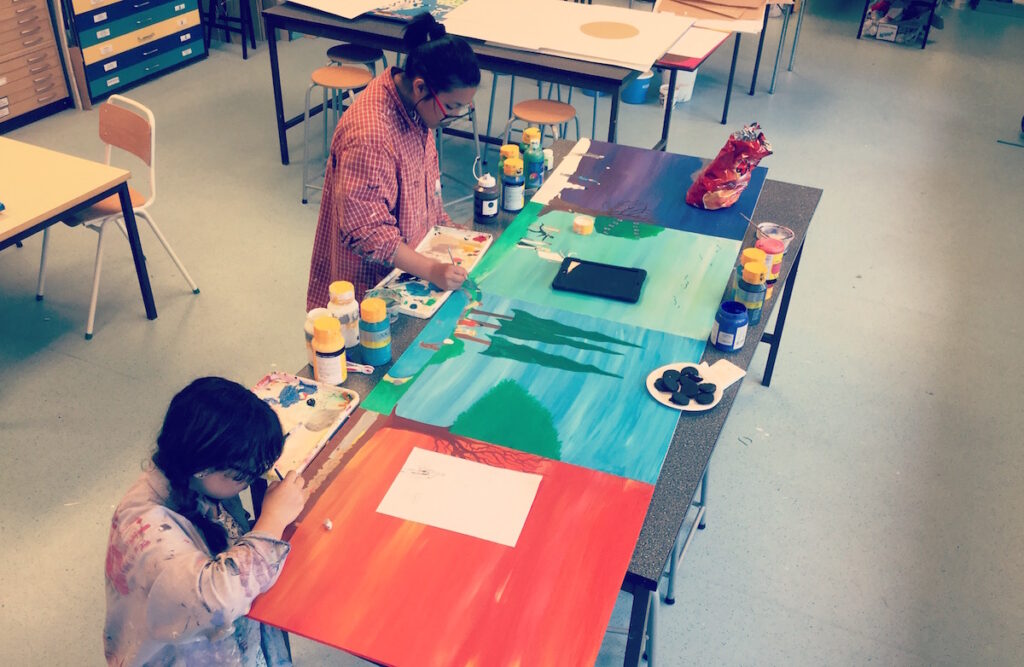
Some other exploratory courses that have been taught are landscape painting, felting, badminton, soccer, rugby, karaoke, ping pong, walking, cycling, set design (the sets are made by the students for the musical), and metal making. The courses change each quarter depending on what the teachers want to teach.
Arts in the Community
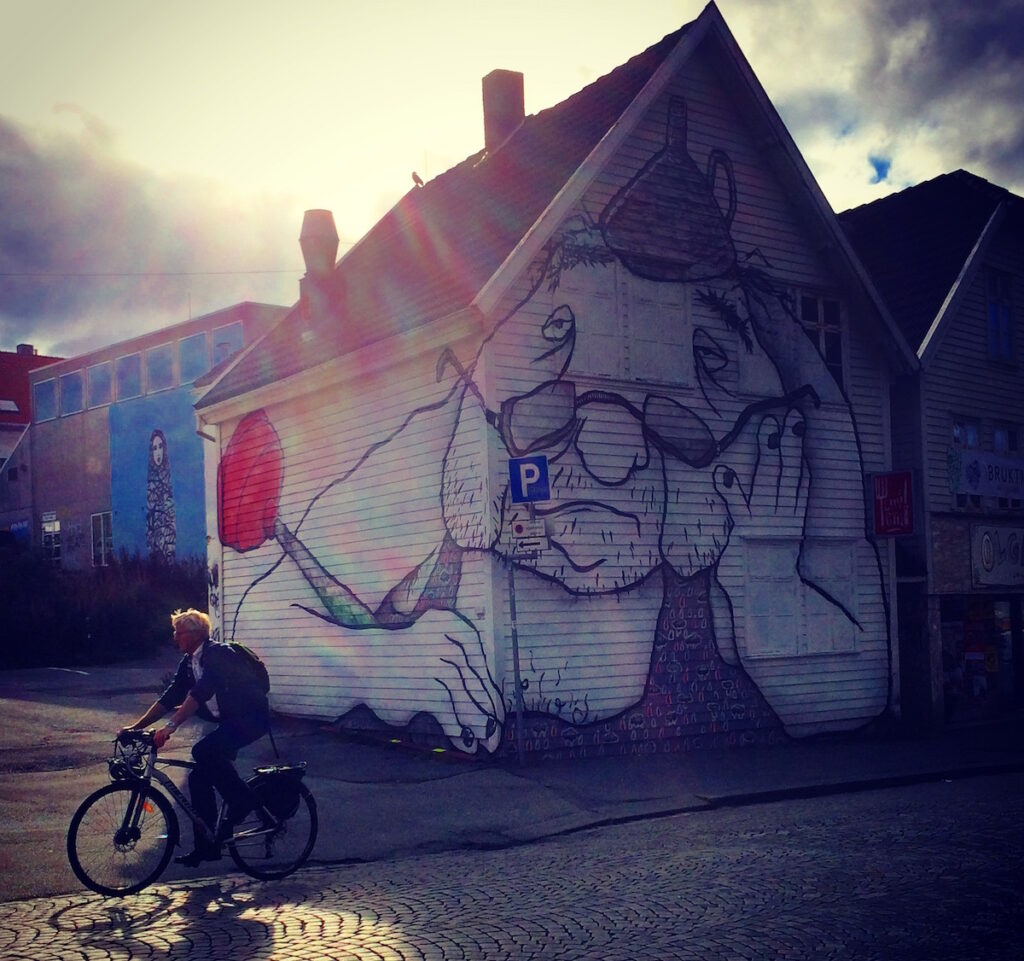
I’ve enjoyed meeting like-minded people in my school and community who value the arts and the importance they hold. As an art teacher, I will always advocate for as much support as I can get for the arts.
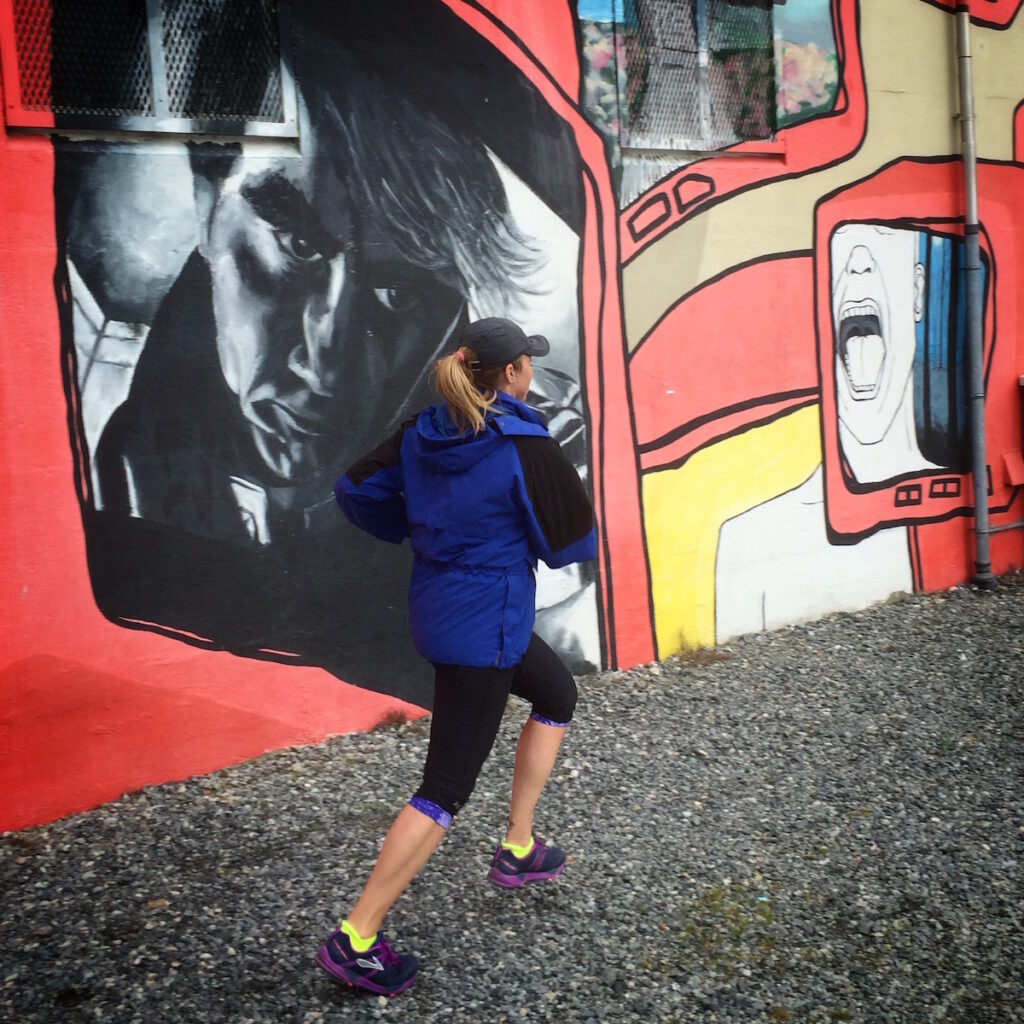
Our little town of Stavanger actually has this amazing street art festival each year called NuArt. Street artists from all over the country come in and create works all over the city. Our school also gets involved with the festival each year by taking students on field trips and collaborating with some of the artists to do murals.
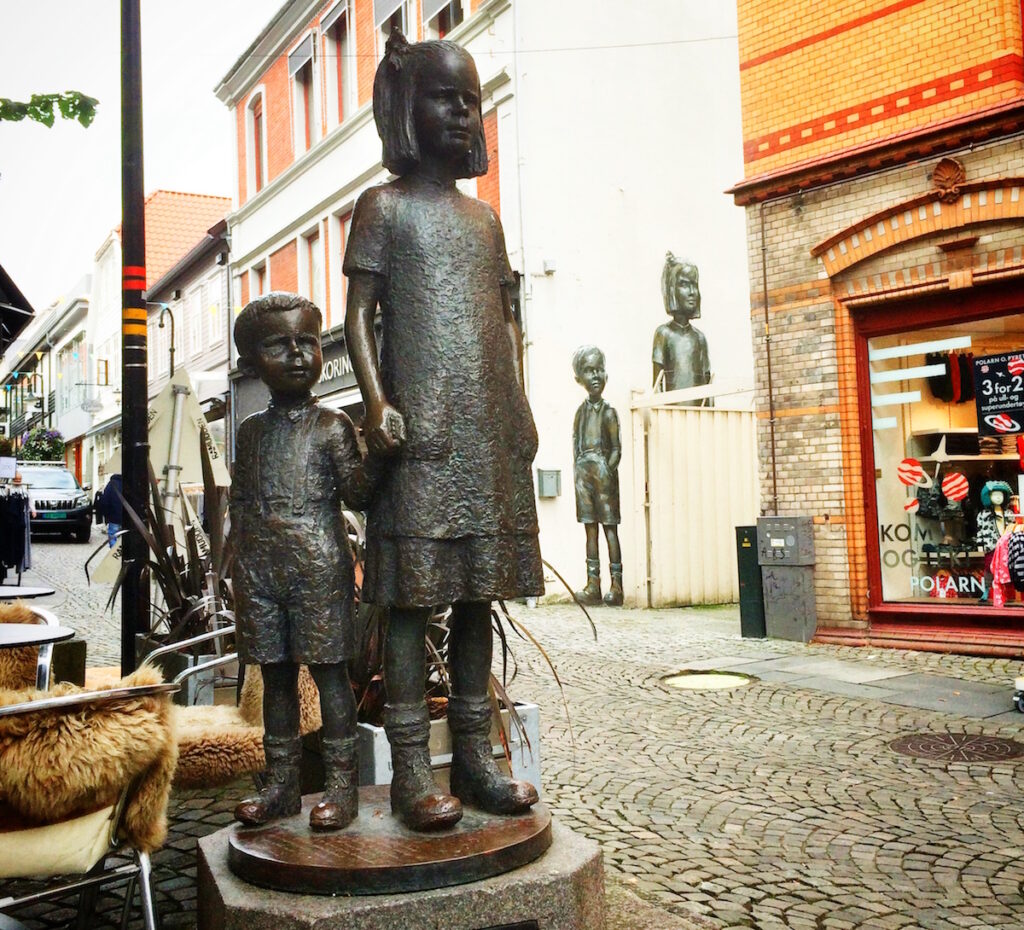
There is so much street art around town. Living in a city that celebrates street art like Stavanger does makes it quite fun to do art lessons involving spray paint and graffiti.
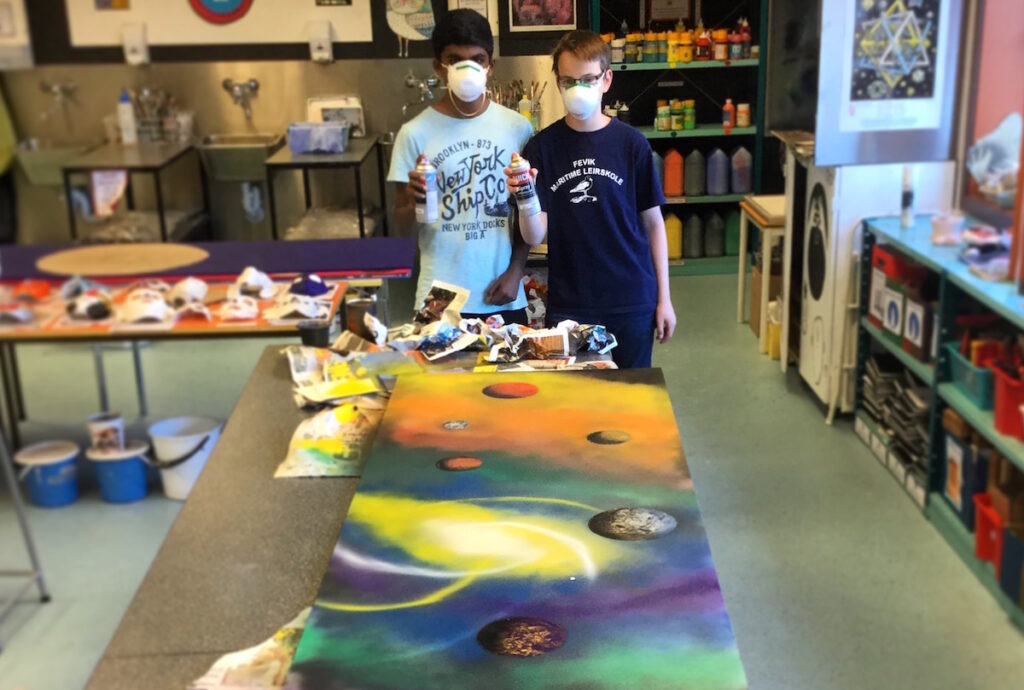
On Living in Norway
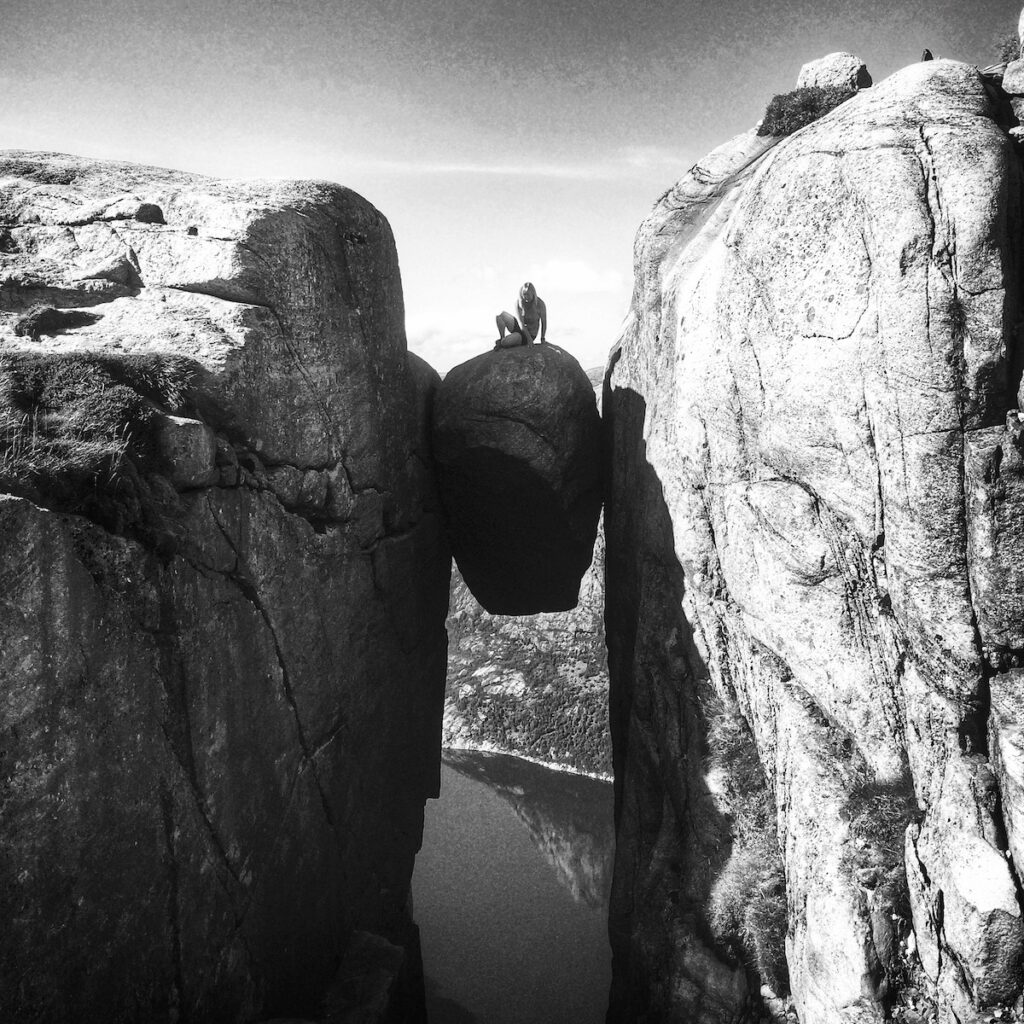
Norway is incredibly safe, clean, and stunningly beautiful. We were a bit worried about the cold, dark, and long days of winter. However, they haven’t been as difficult as I thought they might be. Plus, the Norwegians know how to handle the winter very well and make the most of it. We try our best to follow along and get out and do things in the winter that you can’t always do other times of the year, like snowshoeing or cross country skiing!

I was kind of surprised that so many people speak English so incredibly well! It caught me off guard that many Norwegians speak English and sound like they could be from the U.S. It is really the first place we’ve lived outside of the States where the local people are talking and they look and sound like they could be from Norway OR Ohio.
Housing
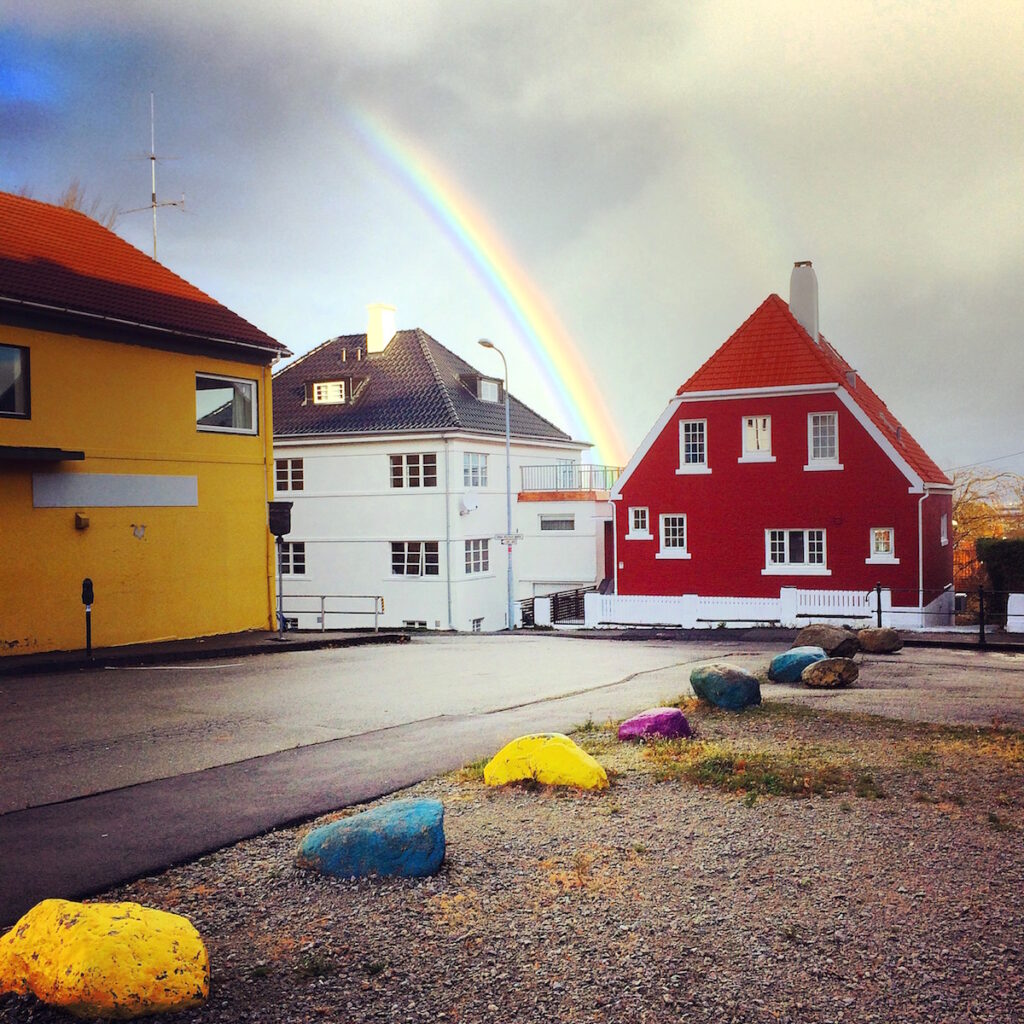
The neighborhood where we live is very quiet and peaceful. We can see our school from our living room window and it takes us about 10 minutes to walk there. Our kids go to the same international school where my husband and I both work. We feel very fortunate that our children are able to attend this school along with students and teachers from all over the world. Plus, it’s great that we get to see each other throughout the day in the hallway, cafeteria, or in assemblies.
We are close to almost everything since Stavanger is not a very big city. It’s great because the closest grocery store is a 5-minute walk away.
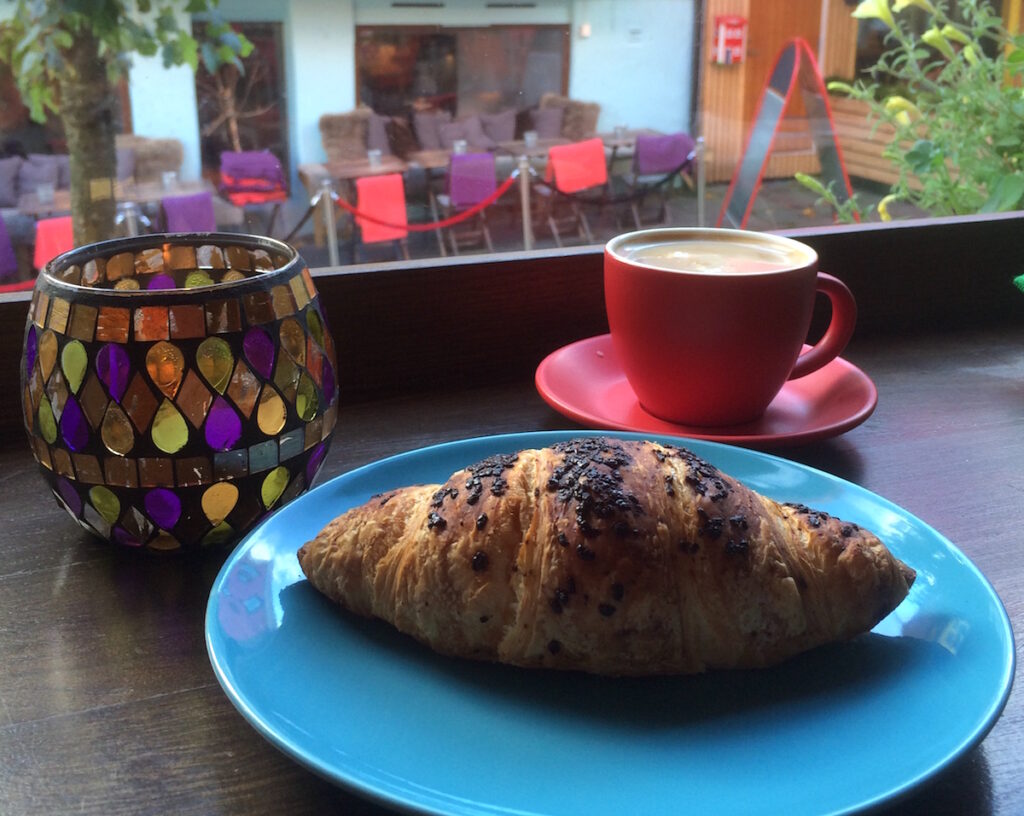
Generally, things here in Norway seem to be double the price of what they would be in America. During our years here, gas prices have run between $7 and $10 a gallon!
Trash and Recycling
As silly as it sounds, figuring out the trash and recycling system in Norway was a big deal for me. It felt very complicated and all of the information was in Norwegian. We sort all plastic, glass, metal, and something called “Pant” into different containers. About once a week, we load up our car with the containers of plastic, glass, and metal and take them to the local recycling bins. These are not collected at our house.
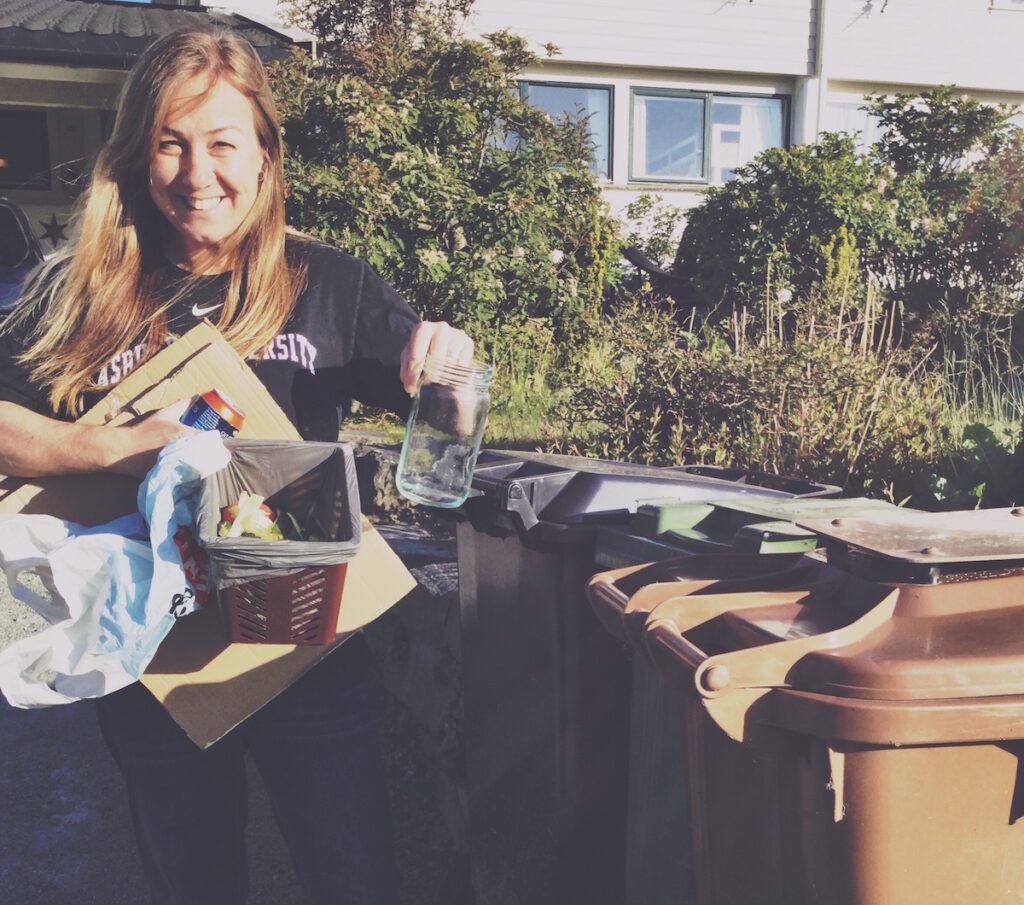
We also have 3 different colored trash cans. In these different trash cans, we sort compost, paper items, and something called “restafval.” This is Norwegian for “the rest of the things.” The tricky thing is that these different trash cans are only collected on certain days and not every week….and the “trash calendar” is in Norwegian. Thankfully, it also has little images and we finally figured out what they each mean.
Travel
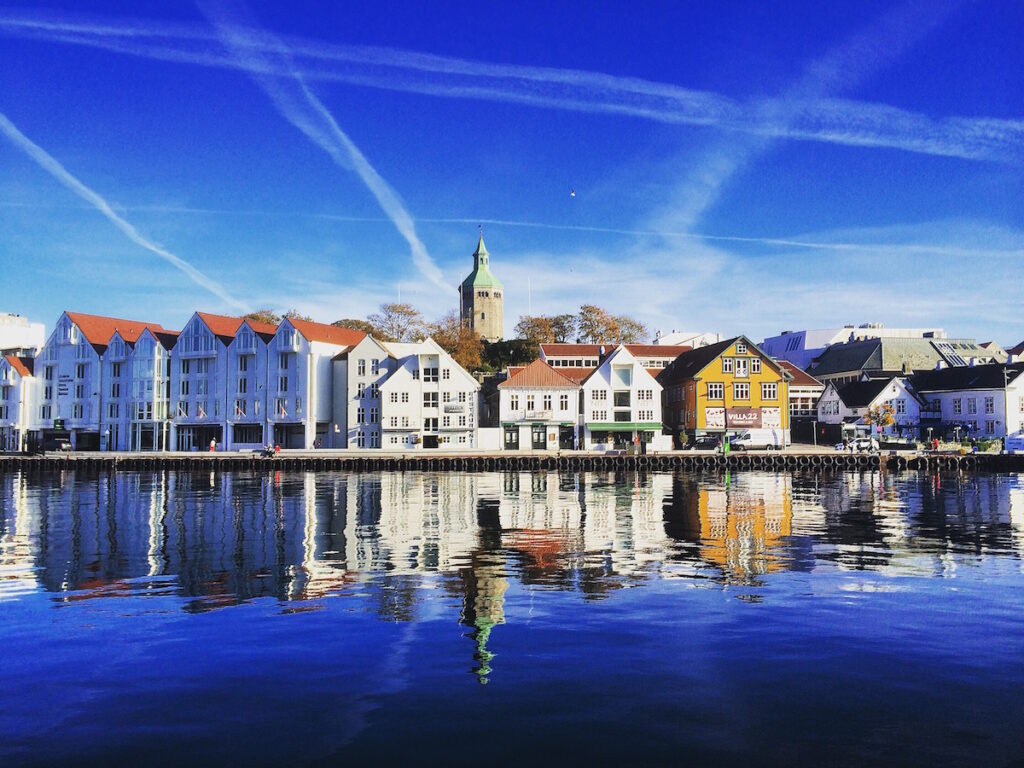
This is the Stavanger harbor…which is about a 15-minute drive from our house.
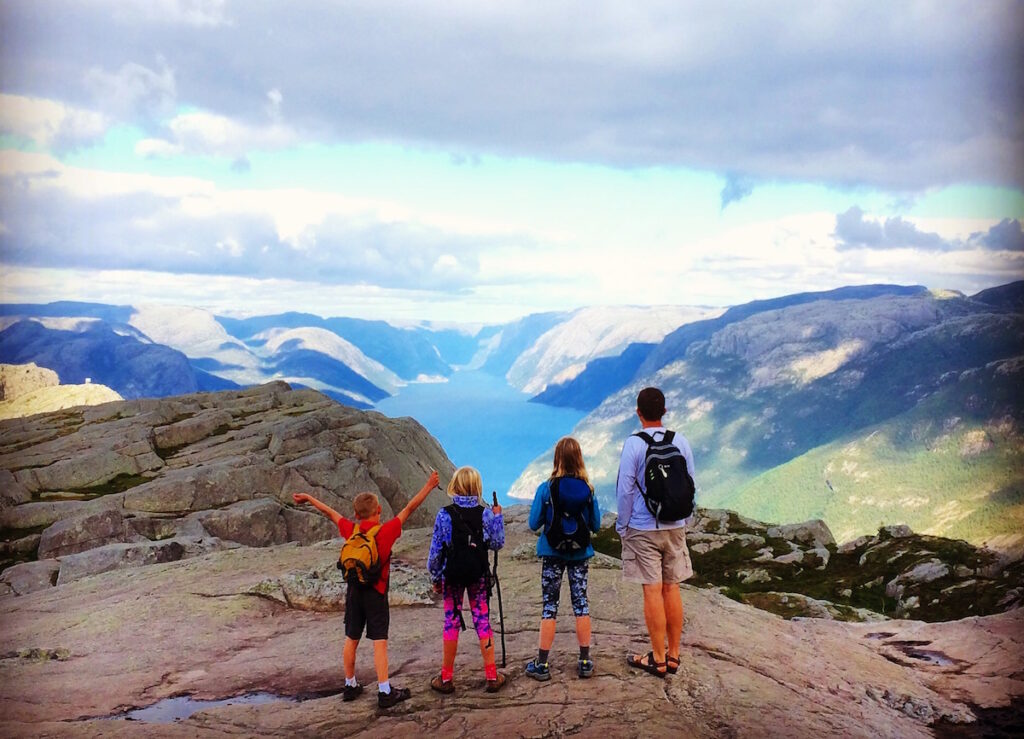
A 2-hour drive (which includes taking our car on a ferry) and a 2-hour hike from our house provides us with this view!
Norway has so many incredibly beautiful places to visit that are just a couple of hours from our home. If you look up Preikestolen or Troll’s Tongue, you will see what I mean.
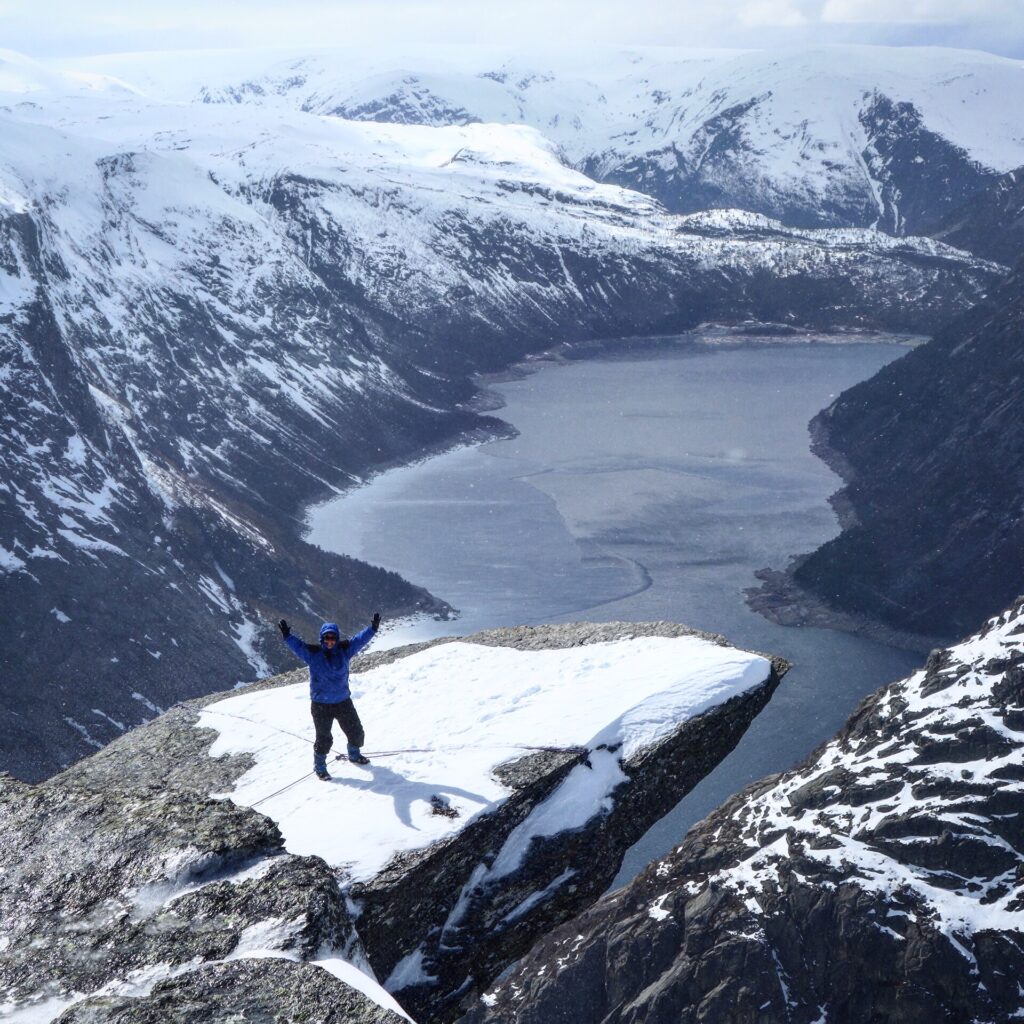
Norway also has this amazing cabin system run by The Norwegian Trekking Association, with over 500 cabins across Norway. We take advantage of this as much as possible.
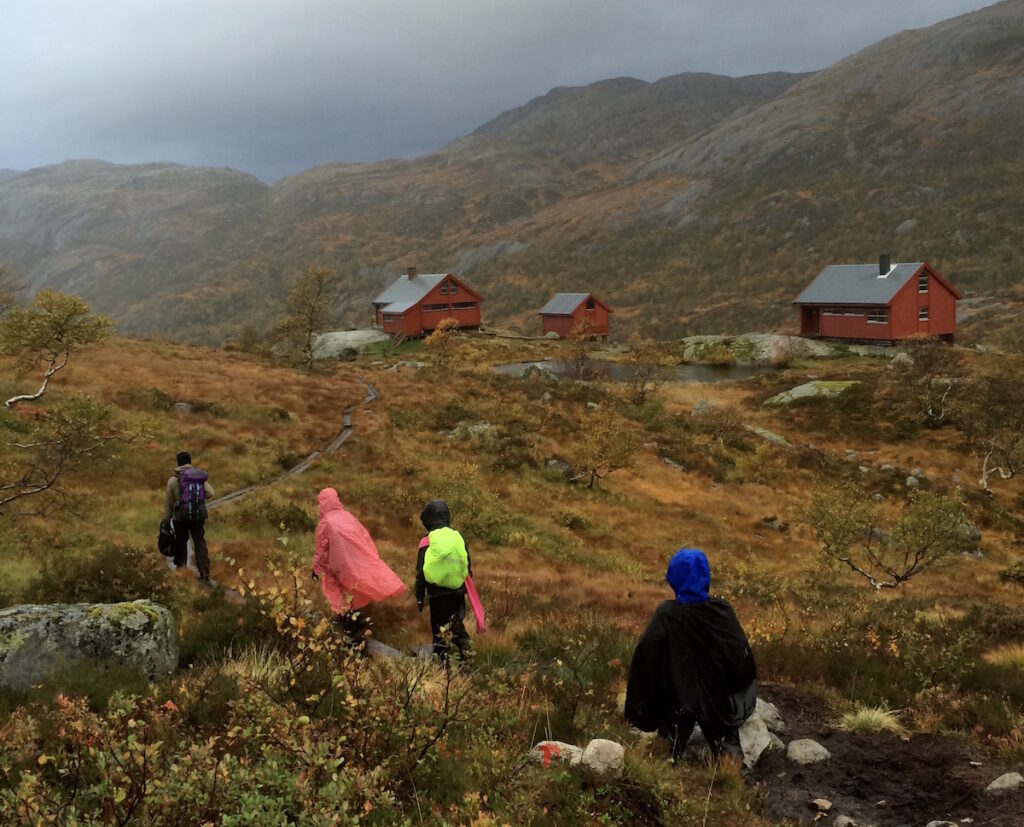
This particular hike took about 8 hours for our family to hike from the trailhead to the three red cabins you see in the photo.
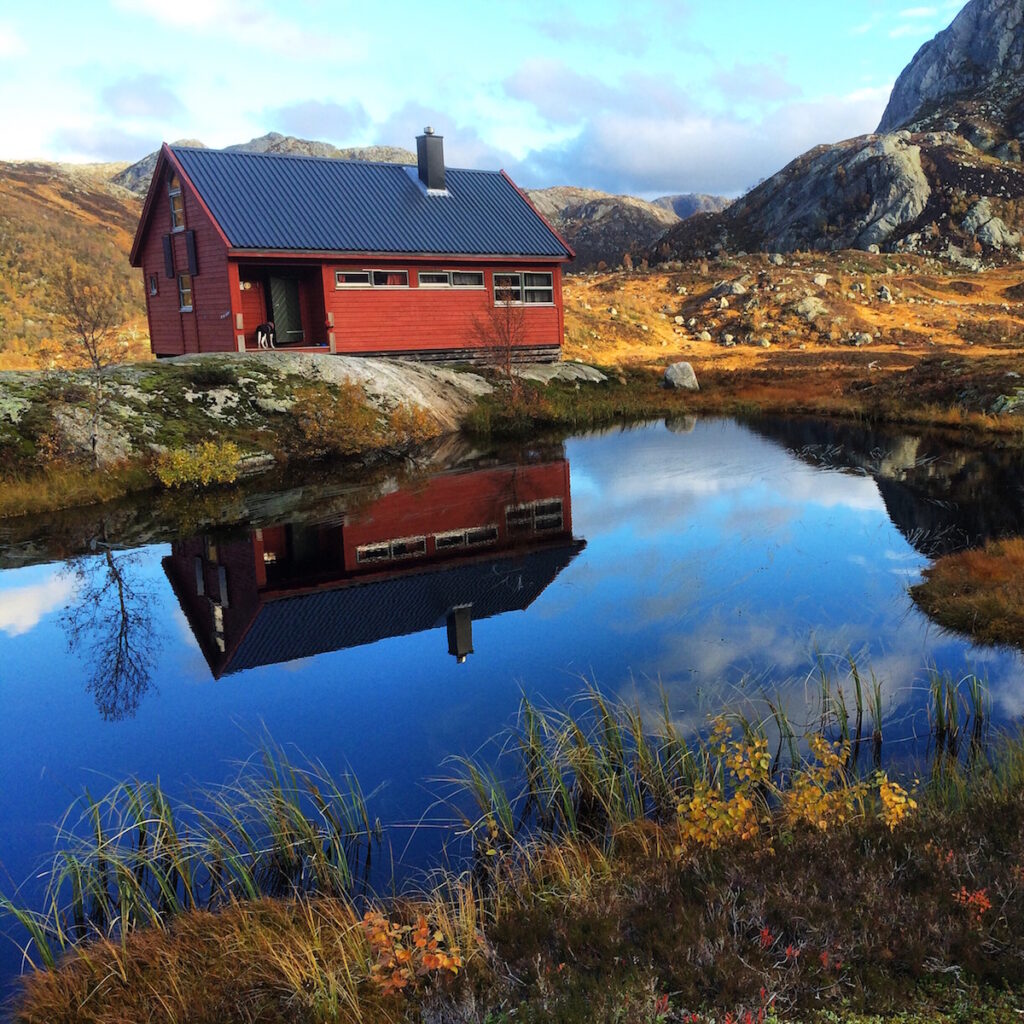
There is usually no electricity or running water. However, there are plates, firewood, pillows and blankets, buckets to get water from the lake or river, and outhouses (that red cabin in the middle is the outhouse). We find these cabins to be amazing and much better than sleeping in a tent when the chances of rain and cold weather are extremely high.
We are fortunate to live in this really beautiful country and call it home for a while.
On Teaching Abroad
I’d have to say the challenges teaching here are the same as teaching at most international schools. Saying frequent goodbyes to students and friends is always a difficult thing when living and working abroad. On the other hand, my favorite thing about teaching in Norway is that I get to teach students from all over the world. They come into my classroom with a wealth of interesting and varied experiences that often show up in their artwork. Their life experiences of travel and different cultural backgrounds provide a rich, diverse, and interesting basis for creating and learning together. I love learning from and with them.
I have absolutely loved living and working internationally. The opportunity to live and travel around the world is exciting, challenging, inspiring, and amazing. There are so many incredible teaching opportunities around the world for teachers. If you are a teacher and up for an adventure….take a few years and teach internationally!
Thank you so much, Libby!
Remember to come back next Monday for another installment!
Tell us, have you taught abroad? What was your experience like?
Has anyone else ever been to Norway?
Magazine articles and podcasts are opinions of professional education contributors and do not necessarily represent the position of the Art of Education University (AOEU) or its academic offerings. Contributors use terms in the way they are most often talked about in the scope of their educational experiences.
